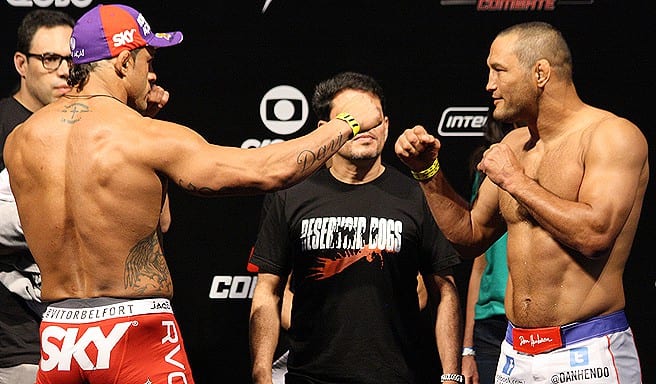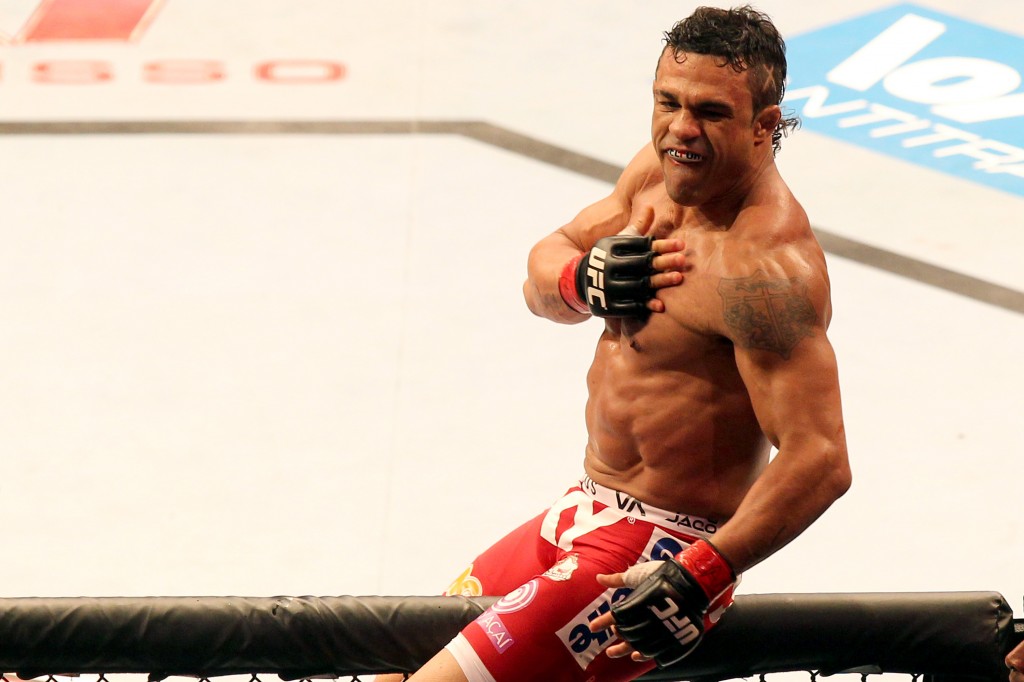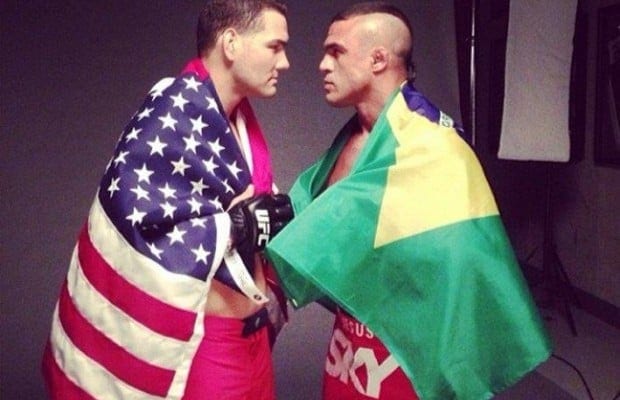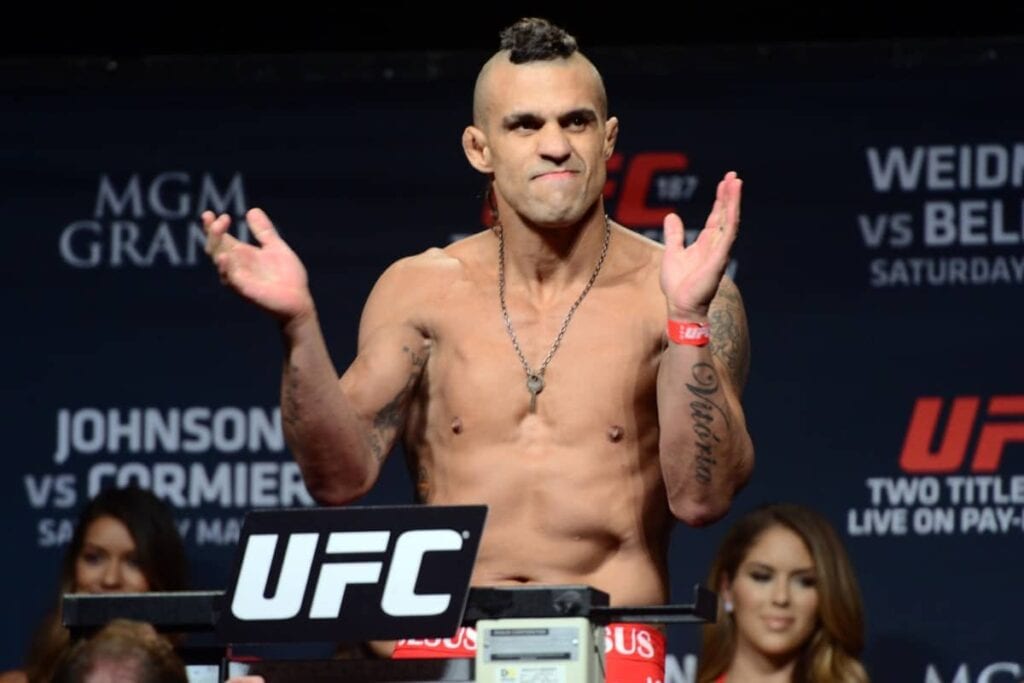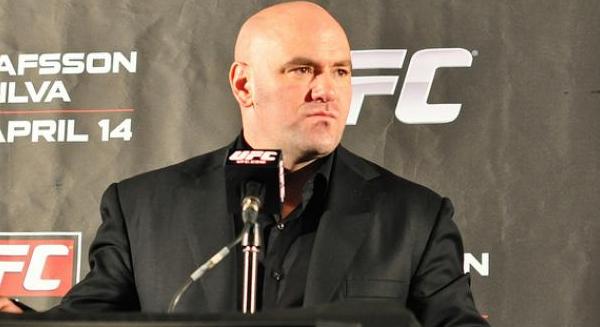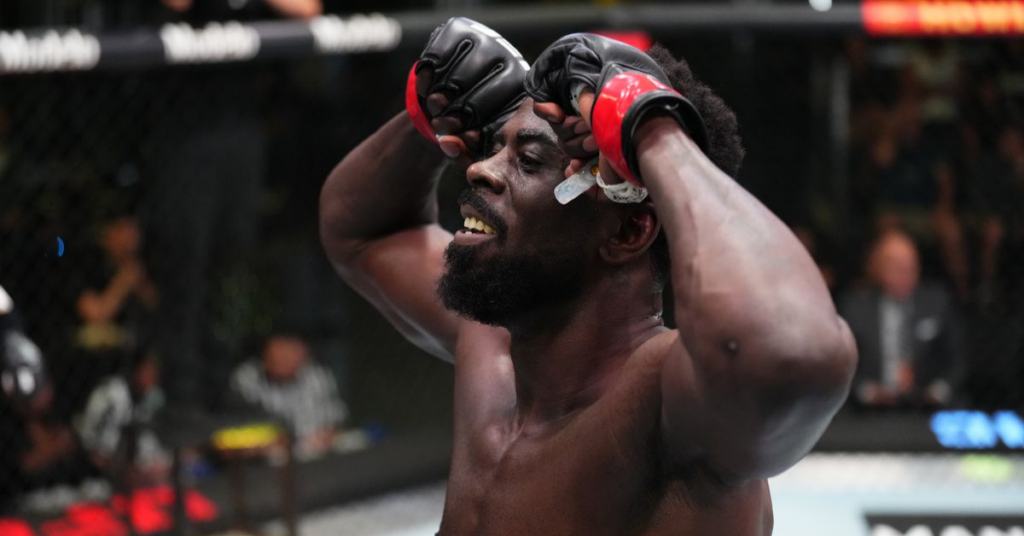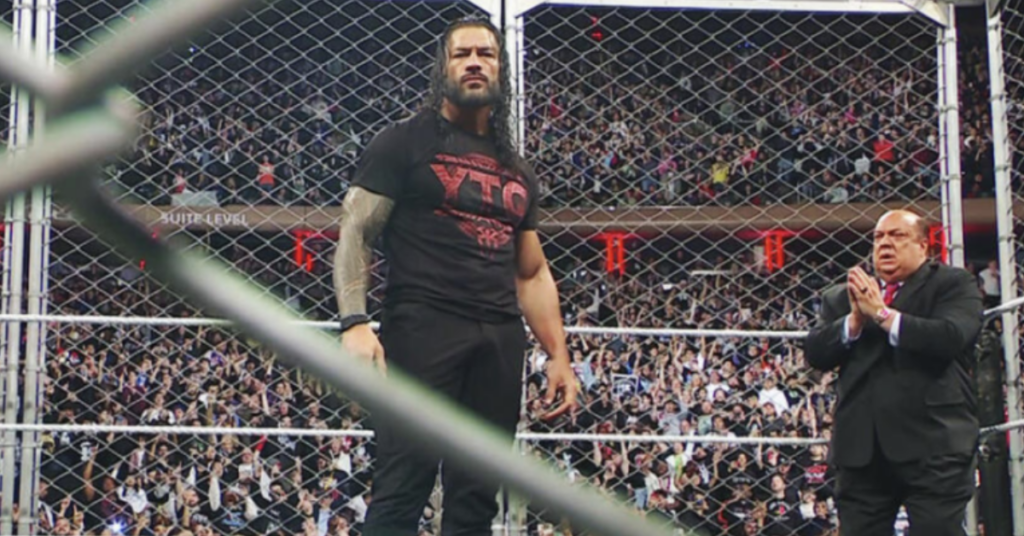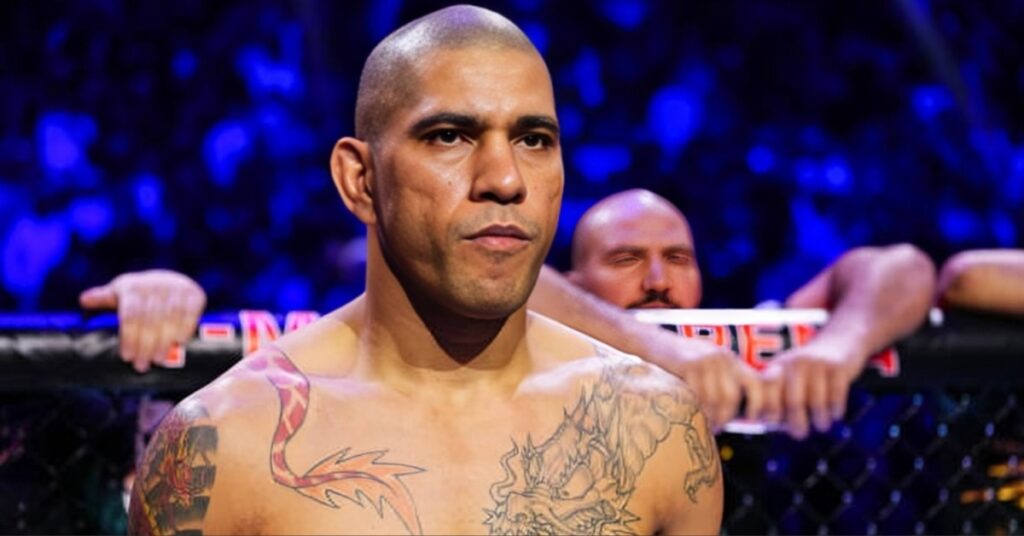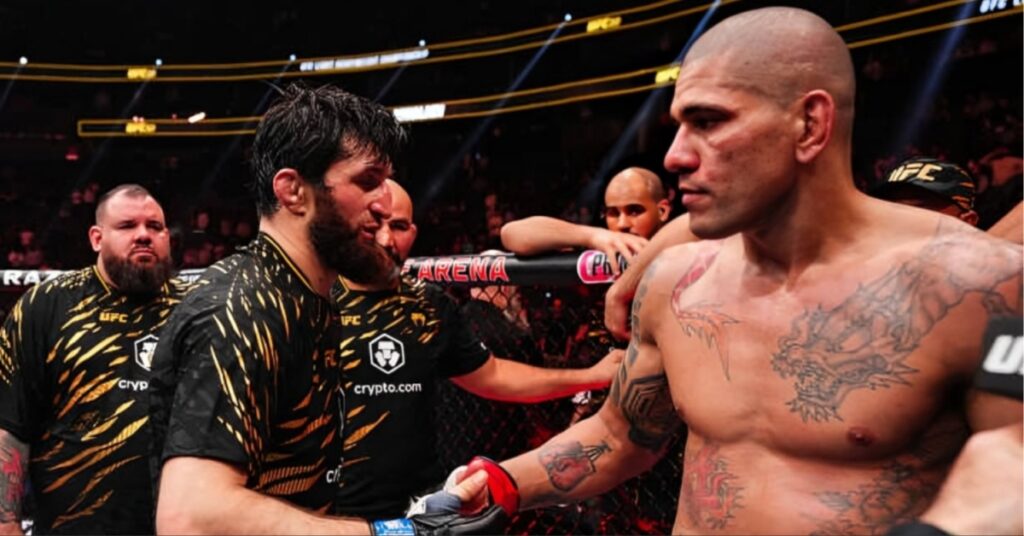Five Times Vitor Belfort Blatantly Cheated
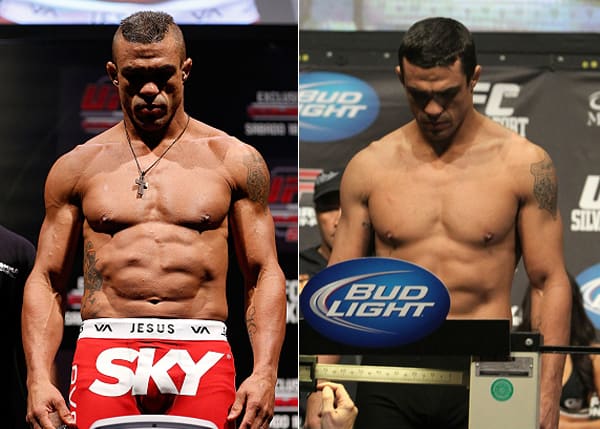
Vitor Belfort has done it all over the course of a mixed martial arts career that started way back in 1996 at the tender age of 19.
Unfortunately, to say that Belfort has “done it all” would not only apply to fighting all over the world for nearly every major promotion in MMA history, as it could equally apply to his litany of transgressions related to performance enhancing drugs and testosterone levels.
From failed drug tests, therapeutic use exemptions, and elevated hormone levels, to cover-ups, shambolic excuses, and laughable athletic commissions, we the fans have unfortunately been fed every trick in the book by a flagrant and unrepentant cheater.
I would quote the great Charlie Murphy, but to say Belfort is a “habitual line-stepper” would be a gross understatement. As “The Phenom” looks to climb back into title contention for perhaps the last time this Saturday at Arena da Baixada in Curtiba, Brazil against “Jacare” Souza, let us look back at the many times he made a phenomenal fool of himself.
1. Busted for Steroids After Pride 32
The first official red flag for Belfort came after his unanimous decision defeat at the hands of Dan Henderson on October 21, 2006.
While the majority of Pride events took place in Japan, a select few took place in Las Vegas and were overseen by the Nevada State Athletic Commission (NSAC). This is an important fact because Pride’s drug testing policies in Japan were notoriously lax (read: non-existent).
After the event, Belfort tested positive for the steroid 4-hydroxytestosterone. His excuse was that he had purchased and ingested an over-the-counter supplement that contained the banned substance. Furthermore, his doctor had injected him with a cocktail to help speed the recovery of a torn meniscus, and it must have contained the steroid.
This was but the first of many excuses we would be treated to from Belfort.
2. The TRT Saga
This is the chain of events – and physiques – that changed Belfort’s reputation from that of a one-time steroid offender to the divisive face of TRT.
Shortly after his failed middleweight title bid to Anderson Silva at UFC 126, Belfort sought the advice of a doctor for feeling “tired and lethargic.””
He was diagnosed with low testosterone and prescribed Testosterone-Replacement Therapy (TRT), which aims to bring a person’s testosterone levels back within a normal range. But the very fact that the Brazilian was diagnosed with low testosterone is a red flag. The inability of the body to create its own testosterone is one of the side effects of prolonged steroid use.
His previous positive test for steroids should have precluded him from being allowed to fight on TRT. And yet, he was. Did he do so legally, or did the UFC ensure his ability to fight?
In a report conducted by Bloody Elbow’s John S. Nash, Belfort had supposedly been granted permission to use TRT, but Nash could not confirm that that was true with any of the pertinent athletic commissions. At a licensure hearing with the Nevada State Athletic Commission ahead of his proposed match with Chael Sonnen at UFC 175, Belfort’s lawyer intimated that Belfort had received permission from the commissions of Pennsylvania (for UFC 133), Ontario (UFC 152), and Brazil (UFC 142, UFC on FX 7, UFC on FX 8, and UFC Fight Night 32).
But Nash could not get confirmation from either Pennsylvania or Ontario that Belfort had been given permission to use TRT. The first of Belfort’s four fights in Brazil was overseen by the UFC, as Brazil did not have a commission at the time. The new Brazilian commission (CABMMA) oversaw the remaining three. However, those three fights called into serious question the legitimacy and efficacy of the Brazilian commission.
Belfort looked significantly more heavily muscled and shredded following his return to middleweight. After dropping his 205-pound title fight with Jon Jones at UFC 152 on September 22, 2012, he would go on to have one of the most electrifying years in UFC history. The change in physique was coupled with a trio of spectacular head kick knockout victories in Brazil over Michael Bisping, current champion Luke Rockhold, and Dan Henderson. Belfort was then slated to challenge then-champion Chris Weidman for the middleweight title at UFC 173 on May 24, 2014 in Las Vegas.
Before that fight could come to fruition, the NSAC banned the continued use of therapeutic use exemptions (TUE’s) for TRT. The UFC and many other athletic commissions followed suit. No longer able to (legally) inject himself with testosterone, Belfort pulled out of the fight the very next day. Citing the limited time between then (February 28) and his bout with Weidman (May 24) to acclimate his body, Belfort declined to apply for a license to fight in Nevada, scrapping the fight.
So ended the days of a legally juiced-up Belfort. But that would not be the end of his troubles with the Nevada State Athletic Commission.
3. Failed Random Drug Test Prior to Weidman Fight
While attending the World MMA Awards in Las Vegas on February 7, 2014, Belfort was approached and tested by employees of the Nevada State Athletic Commission. The results of that test came back flagged for elevated levels of testosterone, and marked the second time the Brazilian had failed a drug test. (It turned out that it was only the second widely-known test failure. More on that in a moment.)
Belfort’s test returned a testosterone level of 1,472 ng/mL, where the normal range for a man Belfort’s age is 348 ng/mL to 1,197 ng/mL). Moreover, his level of free testosterone was nearly twice the legal limit (50.0 pg/mL compared to an upper limit of 25.1 pg/mL). Belfort later admitted to failing this test, but waved it off as irrelevant, claiming the athletic commission had no jurisdiction to test him, as he had not applied for a license to fight in Nevada. He defended the result by stating that he had planned to apply for a therapeutic use exemption for testosterone replacement therapy in Nevada, and “had further taken the TRT dosage recommended by my doctors the day prior.”
Belfort was never officially suspended but ended up having to wait over a year to fight again. After he pulled himself from the Weidman fight at UFC 173 following the ban on TRT, Lyoto Machida was inserted to replace him. His proposed match-up with Chael Sonnen at UFC 175 was scrapped after Sonnen failed his own random drug test. Following Weidman’s victory over Machida, he and Belfort were once again slated opposite one another, but injuries delayed the fight until May 23, 2015 at UFC 187.
4. Physique Post-TRT
When Weidman and Belfort finally met at UFC 187, Belfort did not look like the same fighter who had ripped through some of the division’s best on his way to a title shot.
It was not necessarily his performance that was uncharacteristic, as he came out with his trademark aggression and battered and bloodied the champion in the opening minutes. No, it was his body that had undergone yet another transformation. Gone were the rippling muscles and minuscule body fat percentages. Belfort looked all of his 38 years, confirming for many their suspicions that he had gamed the system while on TRT. Without that advantage, he was not the same physical specimen.
Those hoping Belfort would get his comeuppance at the hands of Weidman were left satisfied. After surviving the Brazilian’s initial barrage, “The All-American” took him down and pounded his way to a first-round TKO.
5. UFC Allegedly Covers Up Failed Drug Test Ahead of UFC 152 Title Bout with Jon Jones
While it was but another in a long line of transgressions, both proven and widely suspected, Belfort’s failed test ahead of his title bout with Jones at UFC 152 on September 22, 2012 was more of a black eye for the UFC than for Belfort.
In a September article for Deadspin, former Sherdog.com editor and ESPN contributor Josh Gross detailed how the UFC tried to cover up and suppress the test results they had accidentally emailed to people with connections to the company, including fighters, managers, and coaches.
The email, which included a copy of a Belfort drug test showing elevated levels of testosterone (47.7 pg/mL, more than two-and-a-half times the level a man his age should have been) was sent out on September 4. In the ensuing hours, the recipients were sent several more emails. First the offending party at the UFC attempted to recall the original. Then came an email explaining they had been sent the previous one in error and that they were to delete the email “ASAP”. Finally, the recipients got a message from the UFC’s counsel explaining that they had no right to the contents of the email and would be prosecuted if they shared it.
The bout between Belfort and Jones went on as scheduled. Belfort nearly snatched a victory with a tight first-round armbar, but eventually succumbed to a fourth-round keylock from the champion.
While the email and its content had been covertly circulated in the MMA world, it did not come to the attention of the general public until the Deadspin article more than three years later. More than a few people were outraged that the fight was allowed to happen at all, and it remains an ugly black eye for the world’s premiere mixed martial arts organization.
So ends the list of known Vitor Belfort testosterone and PED transgressions (to this point in history). And yet, it does not even include his fights in Japan, where Pride’s attitude toward drug testing was laissez faire, at best. Will we see another cheating controversy swirl around Belfort before he retires? Are there any that we missed? Let us know in the comments below.

